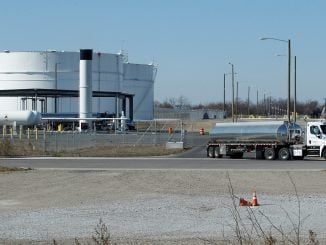WASHINGTON, D.C. — American consumers increased their spending by a sharp 8.2% in May, partly erasing record plunges the previous two months, against the backdrop of an economy that’s likely shrinking by its steepest pace on record this quarter.
Last month’s rebound in consumer spending followed spending drops of 6.6% in March and 12.6% in April, when the viral pandemic shuttered businesses, forced millions of layoffs and sent the economy into a recession. Since then, many businesses have reopened, drawing consumers back into shops and restaurants and restoring some lost jobs.
Friday’s Commerce Department report showed that Americans stepped up their spending in May despite a 4.2% decline in personal income, which had soared by 10.8% the previous month. Income had jumped in April on the strength of billions of dollars in support through government payments in the form of unemployment aid as well as one-time $1,200 stimulus checks. In May, those stimulus checks were no longer counted as income for most people.
Besides whatever unemployment aid states are providing to the 30 million jobless Americans, the federal government is providing $600 a week in additional benefits. The federal money has pumped nearly $20 billion a week into the economy and enabled many of the unemployed to stay afloat. But the $600 a week in aid will expire after July, and Trump administration officials have said they oppose an extension.
Without the stimulus checks or an extension of unemployment aid, it’s unclear whether consumers will keep spending freely. In testimony to Congress last week, Federal Reserve Jerome Powell said he thought Congress should consider providing some form of extended unemployment benefits beyond their typical six-month period, on the assumption that joblessness will likely still be quite high by year’s end.
Last month’s rise in consumer spending also coincides with a sudden surge in coronavirus cases that’s forcing states and businesses to consider scaling back or even reversing the re-openings. If an escalation of the pandemic does force another round of widespread business shutdowns, fewer people would shop, travel, eat out or attend large events. That would reverse any rebound in spending and would further weaken the economy.
Consumer spending is closely watched because it accounts for about 70% of economic activity. Despite the increased spending in May, economists have estimated that the economy, as measured by the gross domestic product, is contracting at a roughly 30% annual rate in the April-June quarter after shrinking at a 5% percent rate in the January-March period. That would be, by far, the worst U.S. quarterly contraction since record-keeping began in 1948.
In February, the economy fell into a deep recession, according to the National Bureau of Economic Research, the association of economists that is the official arbiter of recessions in the United States. Most analysts expect the economy to rebound in the second half of this year before potentially regaining its pre-pandemic level in late 2021 at the earliest.
The Trump administration is predicting a relatively fast and robust economic rebound starting this summer. Most private economists are far less optimistic. And they warn that if the pandemic intensifies and forces a second round of business closures, it would set the job market and the economy even further back. The damage could be dire.
One hopeful sign, in the meantime, comes from data compiled from Chase Bank credit and debit cards. It shows that consumers have gradually but consistently increased their spending since the government distributed the stimulus checks in mid-April.



